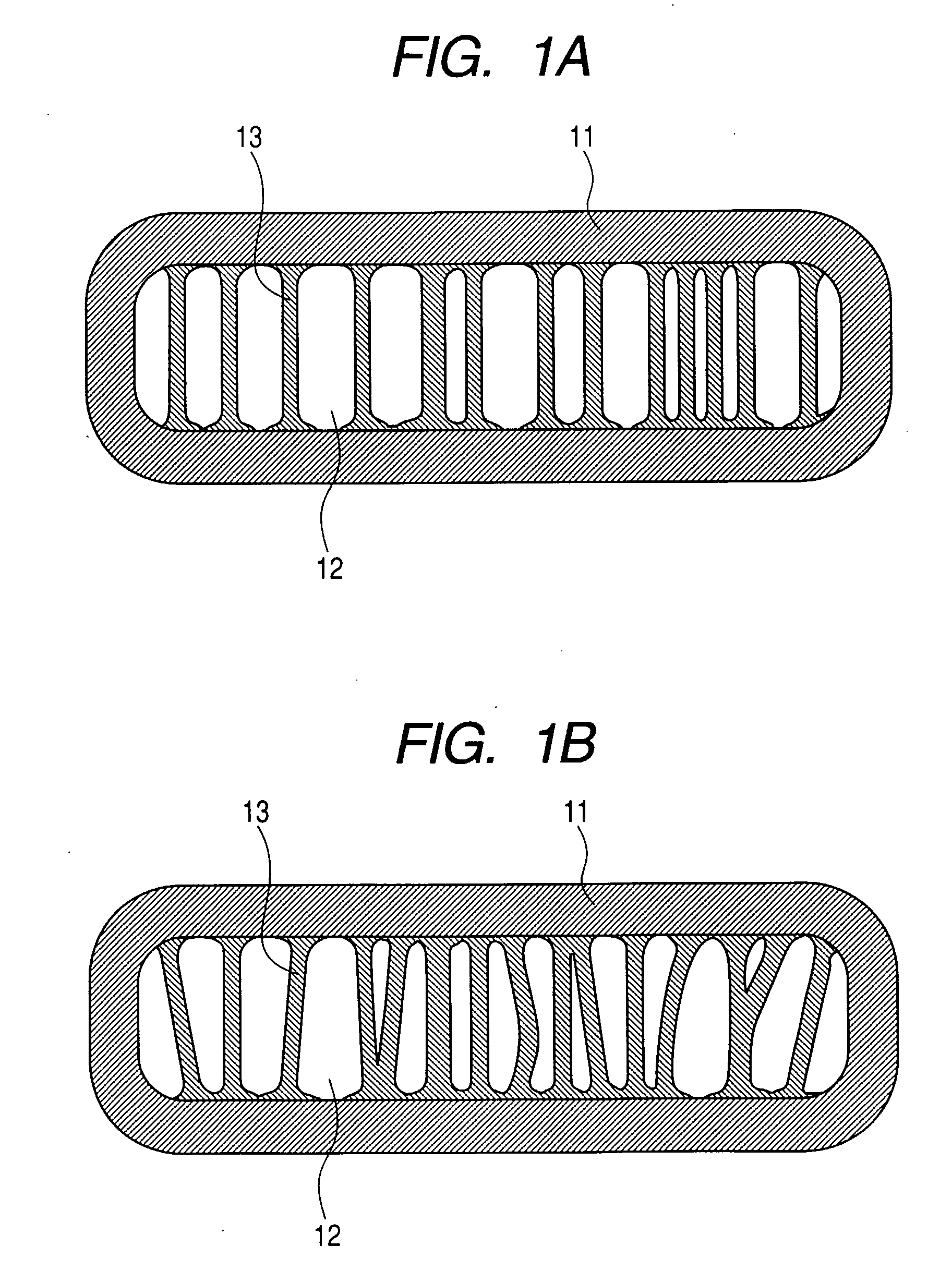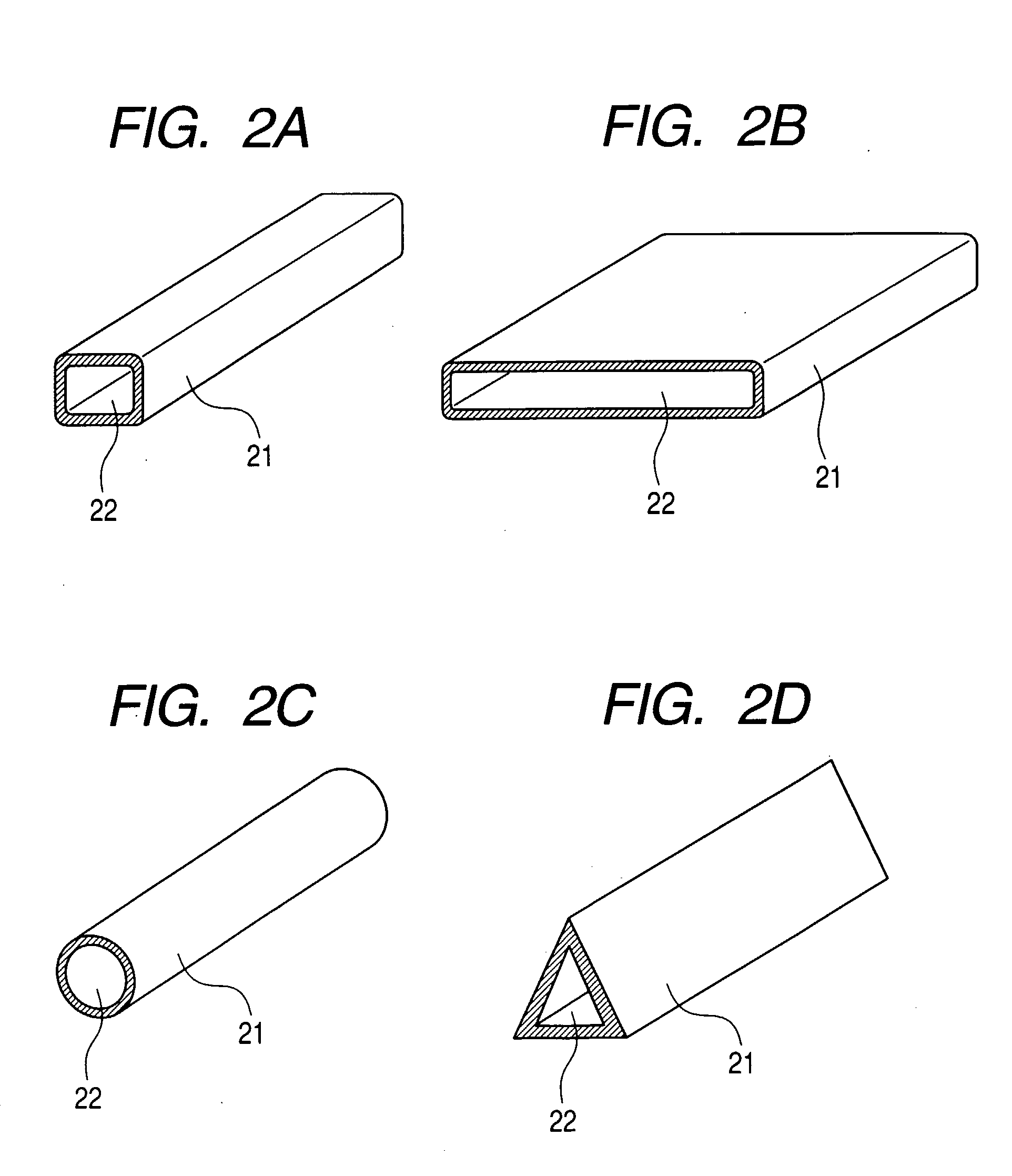Pillar Structure for Separating or Capturing Target Substance
- Summary
- Abstract
- Description
- Claims
- Application Information
AI Technical Summary
Benefits of technology
Problems solved by technology
Method used
Image
Examples
example 1
[0106]This example shows a case of employing a glass capillary as the hollow member having an inner space and using a reaction solution constituted of methanol, methyltrimethoxysilane and nitric acid to form plural pillars in the inner space, thereby preparing a structure.
[0107]At first, 1.56 ml of methanol and 1.36 ml of a 1N aqueous solution of nitric acid were mixed and agitated under cooling with ice. Then, 5.0 ml of methyltrimethoxysilane was added and the mixture was agitated for 5 minutes under cooling with ice to obtain a reaction solution. This reaction solution was transferred to a closable resin container, and an end of the glass capillary was contacted with the reaction solution to fill the capillary with the reaction solution. The capillary had an inner space with a height of 100 μm, a width of 1 mm and a length of 50 mm. Then, the capillary, filled with the reaction solution, was immersed in the reaction solution contained in the resin container, which was then closed ...
example 2
[0109]This example shows a case of employing a glass capillary as the hollow member having an inner space and using a reaction solution constituted of methanol, methyltrimethoxysilane and nitric acid to form plural pillars in the inner space, thereby preparing a structure. In comparison with Example 1, this example is different particularly in the amount of methanol. The structure of the formed pillars can be changed by changing the amount of solvent as shown in this example.
[0110]At first, methanol and 1.36 ml of a 1N aqueous solution of nitric acid were mixed and agitated under cooling with ice. Three solutions were prepared by changing the amount of methanol as 1.49 ml (solution A), 1.56 ml (solution B) and 1.59 ml (solution C). Then, 5.0 ml of methyltrimethoxysilane was added to each solution and the mixture was agitated for 5 minutes under cooling with ice to obtain reaction solutions A, B and C. Each of these reaction solutions was transferred to a closable resin container, an...
example 3
[0113]This example shows a case of employing a glass capillary as the hollow member having an inner space, and using a reaction solution constituted of methanol, methyltrimethoxysilane, ethyltrimethoxysilane and nitric acid to form plural pillars in the inner space, thereby preparing a structure. The present example employed two inorganic oxide precursors in a mixture. The structure of the formed pillars can be changed by changing the type of the inorganic oxide precursor as shown in this example.
[0114]At first, 0.74 ml of methanol and 1.36 ml of a 1N aqueous solution of nitric acid were mixed and agitated under cooling with ice. Then, 4.75 ml of methyltrimethoxysilane and 0.2791 ml of ethyltrimethoxysilane were added and the mixture was agitated for 5 minutes under cooling with ice to obtain a reaction solution. The reaction solution was transferred to a closable resin container, and an end of the glass capillary was contacted with the reaction solution to fill the capillary with t...
PUM
| Property | Measurement | Unit |
|---|---|---|
| Composition | aaaaa | aaaaa |
| Structure | aaaaa | aaaaa |
| Separation | aaaaa | aaaaa |
Abstract
Description
Claims
Application Information
 Login to View More
Login to View More - R&D
- Intellectual Property
- Life Sciences
- Materials
- Tech Scout
- Unparalleled Data Quality
- Higher Quality Content
- 60% Fewer Hallucinations
Browse by: Latest US Patents, China's latest patents, Technical Efficacy Thesaurus, Application Domain, Technology Topic, Popular Technical Reports.
© 2025 PatSnap. All rights reserved.Legal|Privacy policy|Modern Slavery Act Transparency Statement|Sitemap|About US| Contact US: help@patsnap.com



